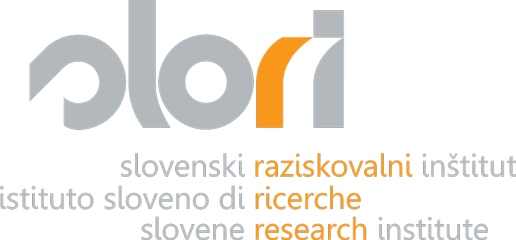A collaboration project
Project promoters: SLORI and Slovenski dijaški dom S. Kosovel (TS)
Partners: Dijaški dom S. Gregorčič (GO); DIZ Stefan (TS), DIZ Cankar-Zois-Vega (GO) in dvojezični šolski center v Špetru (UD)
Manager of the project: dr. Matejka Grgič
Project implementation period: 2016-2017
The project is based on the presupposition that linguistic competencies and abilities develop not only in didactically structured environments (schools and professional schooling courses), but also and mainly in spontaneous situations, when people are exposed to the language and its different usages. Where this kind of exposition is limited, weak or even controversial, it needs integration with adequate instruments, the same that are common in didactically structured environments: these can stimulate spontaneous linguistic learning and the consequent development of the necessary communication competencies and abilities.
This presupposition has now been taken into consideration for several decades in preparing didactical material and teaching/learning instruments for foreign languages. On the other hand, didactics of minority languages usually contemplates the presupposition that the minority language is at the same time a mother tongue or L1 of pupils and students, along with the prevailing language of their life environment. Consequently, the didactic approach, based on general guidelines intended for teaching and learning an L1 or mother tongue, obviously follows this kind of perception and collocation of the teaching language within the linguistic horizon of pupils and students, which is at least partially aprioristic and ideological.
The empirical analysis of the state of the art and needs in this field has instead shown that the introduction of a new didactic method is needed, which does not automatically identify the mother tongue (that is, the mother’s language) with the linguistic knowledge of the single person or with the development degree of communication competencies and abilities. Within the project thus methodologies for teaching/learning foreign languages or L2 will be combined with methodologies for teaching L1 and for developing linguistic competencies and abilities employed in the fields of communicology and rhetoric.
During the first phase of the project, which took place from September to December 2016, the study group has prepared the first three didactic units. The project director, dr. Matejka Grgič, has interviewed stakeholders (pupils, teachers, parents, educators, trainers…), administered anonymous tests on the development of linguistic competencies of students and pupils, and collected data on the stat of the art and on the measures introduced by other similar minorities or communities of minority languages speakers. This way, she’s collected several types of materials that have already been produced in our area for the project target group (age 12-15). In the coming phases of the project, these materials will be available on the web.
The project aim is to prepare didactic aids for stimulating linguistic studying and learning as to develop linguistic competencies. The material is intended for groups of alumni aged 12 to 15 who attend schools with Slovenian as the teaching language in Italy. The aids will focus on themes that are usually not included in the classical language teaching programs of schools in which that same language is at the same time the teaching language and supposedly L1 of pupils and students.
As to achieve such objective, the work group will prepare the methodological framework, look for practical solutions, and test and implement the abovementioned aids as to make them a suitable starting point for the subsequent integration of the project.
The project comprises a series of activities and tasks:
1. analysis of the state of the art: interviews with stakeholders (alumni, teachers, parents, educators, trainers…) and anonymous tests regarding the development degree of linguistic competencies of alumni in Slovenian language;
2. data gathering on the state of the art and measures introduced by other minorities or minority language speaking communities;
3. collection of different types of material already produced in our area for the project target group (age 12-15);
4. verification and selection of materials; elaboration of materials;
5. implementation of test didactic units (up to 3);
6. testing of materials during classes or extra-schooling activities; corrections and integrations;
7. publication of the materials on the website.
